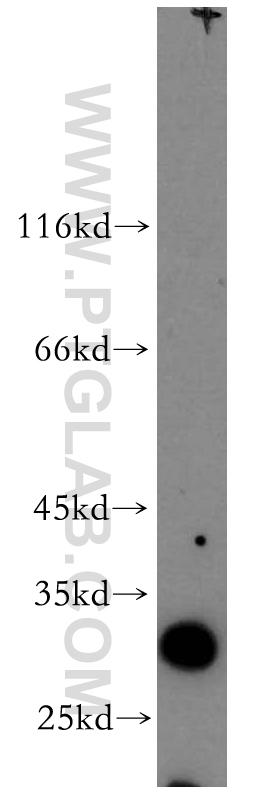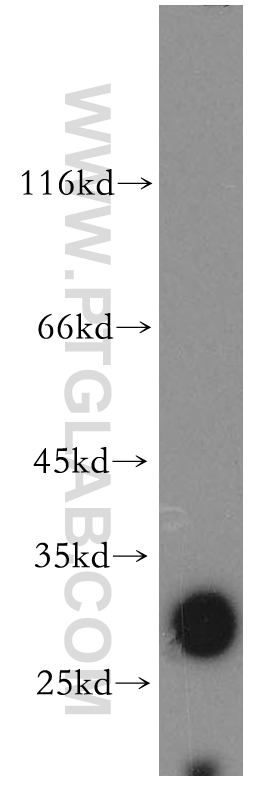验证数据展示
经过测试的应用
| Positive WB detected in | human kidney tissue, HEK-293 cells |
推荐稀释比
| 应用 | 推荐稀释比 |
|---|---|
| Western Blot (WB) | WB : 1:500-1:2000 |
| It is recommended that this reagent should be titrated in each testing system to obtain optimal results. | |
| Sample-dependent, Check data in validation data gallery. | |
发表文章中的应用
| ELISA | See 1 publications below |
产品信息
13320-1-AP targets SLC17A5 in WB, ELISA applications and shows reactivity with human samples.
| 经测试应用 | WB, ELISA Application Description |
| 文献引用应用 | ELISA |
| 经测试反应性 | human |
| 文献引用反应性 | mouse |
| 免疫原 |
CatNo: Ag3855 Product name: Recombinant human SLC17A5 protein Source: e coli.-derived, PGEX-4T Tag: GST Domain: 166-496 aa of BC020961 Sequence: VLRALEGLGEGVTFPAMHAMWSSWAPPLERSKLLSISYAGAQLGTVISLPLSGIICYYMNWTYVFYFFGTIGIFWFLLWIWLVSDTPQKHKRISHYEKEYILSSLRNQLSSQKSVPWVPILKSLPLWAIVVAHFSYNWTFYTLLTLLPTYMKEILRFNVQENGFLSSLPYLGSWLCMILSGQAADNLRAKWNFSTLCVRRIFSLIGMIGPAVFLVAAGFIGCDYSLAVAFLTISTTLGGFCSSGFSINHLDIAPSYAGILLGITNTFATIPGMVGPVIAKSLTPDNTVGEWQTVFYIAAAINVFGAIFFTLFAKGEVQNWALNDHHGHRH 种属同源性预测 |
| 宿主/亚型 | Rabbit / IgG |
| 抗体类别 | Polyclonal |
| 产品类型 | Antibody |
| 全称 | solute carrier family 17 (anion/sugar transporter), member 5 |
| 别名 | Sialin, AST, H(+)/nitrate cotransporter, H(+)/sialic acid cotransporter, ISSD |
| 计算分子量 | 495 aa, 55 kDa |
| 观测分子量 | 31 kDa |
| GenBank蛋白编号 | BC020961 |
| 基因名称 | SLC17A5 |
| Gene ID (NCBI) | 26503 |
| RRID | AB_2187524 |
| 偶联类型 | Unconjugated |
| 形式 | Liquid |
| 纯化方式 | Antigen affinity purification |
| UNIPROT ID | Q9NRA2 |
| 储存缓冲液 | PBS with 0.02% sodium azide and 50% glycerol, pH 7.3. |
| 储存条件 | Store at -20°C. Stable for one year after shipment. Aliquoting is unnecessary for -20oC storage. |
背景介绍
SLC17A5 encodes a transmembrane protein, sialin, which transports free sialic acid across the lysosomal membrane. Mutations in sialin result in neurodegenerative sialic acid storage disorders, Salla disease (SD) and infantile sialic acid storage disease (ISSD). In the central nervous system, sialin is more abundant in neurons than in glia. It has been reported to be localized into lysosome in neuron but in plasma membrane in nonneuronal cells (PMID: 15006695).
实验方案
| Product Specific Protocols | |
|---|---|
| WB protocol for SLC17A5 antibody 13320-1-AP | Download protocol |
| Standard Protocols | |
|---|---|
| Click here to view our Standard Protocols |



